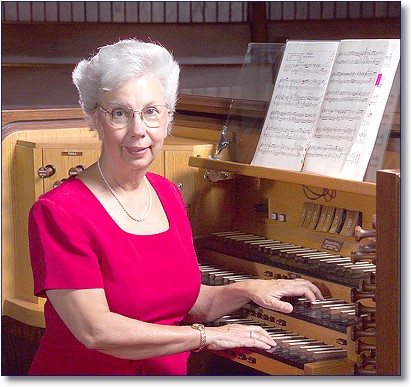I am a Permanent Deacon in the Parishes of ____. Both are small parishes, with small churches and a small choir. We had a meeting today to sing through some of the new mass settings, to select one to use in the parish with the new translation. None of the Mass settings we have been using in the church – a fairly traditional place – has been “upgraded” to the new words, and so I traweled through the internet looking for what was available. I have used the musicasacra web site for items in the past, and was pleased to find the Mass of the Sacred Heart setting. It is one of those settings which sticks in the mind, and I have found myself humming it continually. Suffice it to say, that out of the six settings we sang through, this Mass setting was universally accepted by the Parish priest and the choir (and more importantly, organist) as the one to teach our congregation.
ICEL Chants in Neumes and Four-Line Staff
Ann Labounsky, Faculty Profile
This blog often speaks of the many heroes in the years after the Council who kept the sacred music tradition alive. One we haven’t mention is Professor Ann Labounsky of Dusquene University, where the the Sacred Music Colloquium is being held. She has been the local shepherd who has made this association possible, and been a great friend to the CMAA and sacred music. She has trained countless students in the great tradition, not only on organ but also in chant and hymnody.Most strikingly, she has played a major role in serving as a link between the tradition and the current revival. She has been a brightly burning flame that never dimmed during the years when so many said that the sacred music tradition was gone forever.
Did you ever have the experience of looking for a particular genre of book, and feeling like you were on a long treasure hunt, only to stumble upon the ultimate collection all in one place? This is what happened to me when I sat in Ann’s office for the first time. I looked over my left shoulder at her books shelf, and saw for the first time original editions of incredible books I had only read and heard about.
They included every chant book imaginable, every liturgical book, rare things I’ve never seen before and which are not available at any price. My eyes just popped out in amazement. She was happy that someone noticed. We talked about a few and it became clear that these were not show pieces. She knew them all. Every page. She knew every chant, every accompaniment book, every scholarly study, the whole 20th century history of chant and its ebbs and flows. It was at that moment that I realized that I was in the office of one of the greats.
And great she is: as a musician, as a historian, as an organist, and as a person. She is cheerful and generous, dedicated and enormously talented (to say the least). It has been one of the many graces of the colloquium that so many of us have gotten to know her. She is a legend in her own time, and one can detect her own enthusiasm to see the art that she has loved since she was very young making such a remarkable comeback in our time.
Here she is on a video narrating a film about her teacher, Jean Langlais.
Will the New Missal Make a Musical Difference?
ChantWith.Us
SEP Status
There are no words to express my excitement about what is happening with the Simple English Propers. Tomorrow is the day that the print run will begin. And then: we will all have a book, one book, we can hold that provides chanted English propers for the modern ordinary form of Mass. This will take some getting used to – just the reality seems too good to be true. I can hardly believe that this is really happening.
I know that the post seems pointless. But I really just wanted to share the joy.



